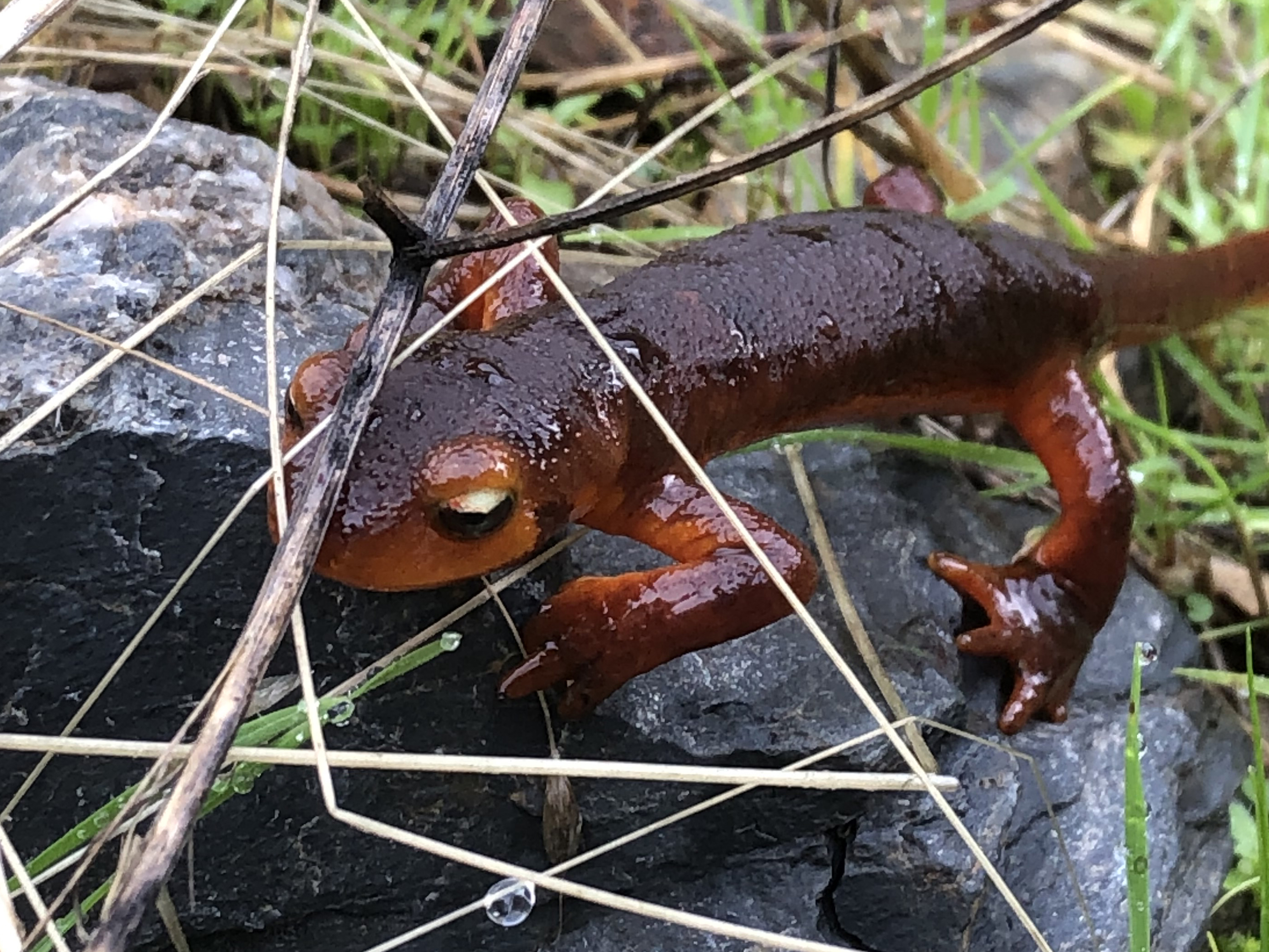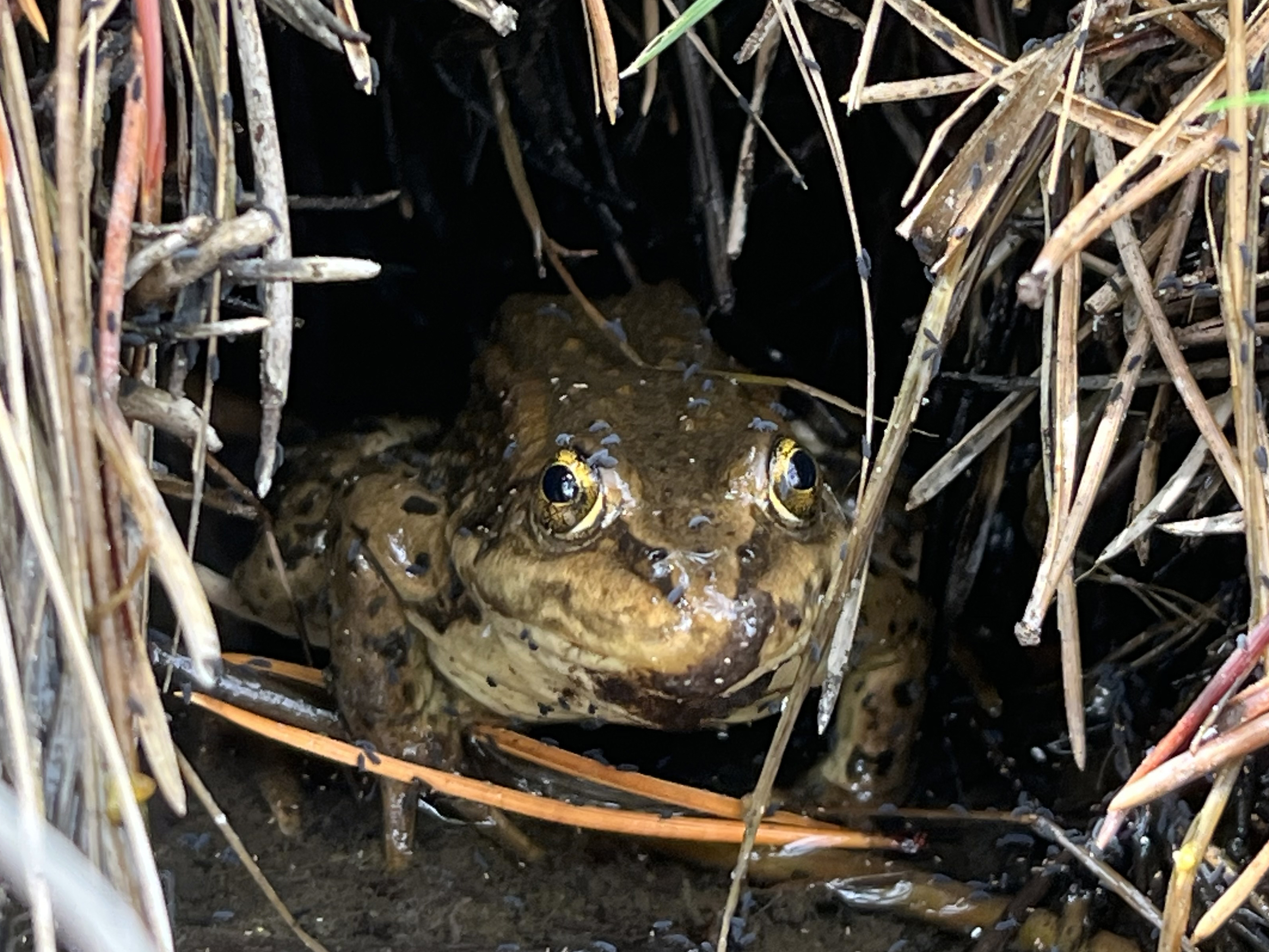Last updated: May 1, 2024
Article
Updated Species Database Will Help Boost Amphibian Conservation Across the National Park System

Woodhouse's toad, Glen Canyon National Recreation Area.
National Parks are Helping Vulnerable Amphibians
When we think about wildlife in the national parks, frogs might not be the first animal that spring to mind. But frogs and other amphibians are highly sensitive to environmental change, so their presence, their absence, and their abundance tell us a lot about overall ecosystem health.
In a lot of cases, the news is not good. According to the International Union for Conservation of Nature (IUCN), 35% of known amphibian species in North America are described as vulnerable in at least some part of their range. And research has shown that on average, US amphibian populations are declining at a rate of approximately 4% annually. The good news is that National Park Service (NPS) lands support a whopping 65% of amphibian diversity in the US, while only covering about 3.5% of the nation's total area. All of this makes amphibians a high priority for conservation efforts by park managers. A recent project by ecologists from the Inventory & Monitoring Division (I&M) will make that work easier.

Western tiger salamander, Teton Range, Wyoming.
Reliable Data Promote Solid Stewardship
To steward amphibians effectively, managers need basic information about which species live in parks. The main source for species information in the national parks is NPSpecies, the National Park Service’s web-based tool where anyone can go to learn about the occurrence and status of species in the national parks.
But species lists need constant maintenance to remain accurate. So scientists from the NPS I&M division and the US Geological Survey worked with amphibian experts around the US to update the NPSpecies data on amphibian occurrences across the National Park System. Many parks already had a list of amphibian species observed within their borders, but in many cases, the lists had not been updated to incorporate recent observations or changes in taxonomy. To create the updated database, scientists combed through old and new park-level records.

Canyon tree frog, Grand Canyon National Park.
What We Know Now
The NPS now has an up-to-date amphibian species checklist for almost 300 parks. The new dataset contains occurrence records for 292 of the 424 NPS units and includes updated taxonomy, international and state conservation rankings, hyperlinks to a supporting reference for each record, specific notes, and related fields which can be used to better understand and manage amphibian biodiversity within a single park or group of parks.
A total of 230 amphibian species were noted as present in national parks. This represents 65% of the 354 species present in the US. Parks in the Southeast and Northeast (where salamander species outnumber species of frogs and toads) had more species than those in the western two-thirds of the country. In total, 40 species of frogs and toads and 96 species of salamanders were documented in the Southeast. The Blue Ridge Parkway, a 470-mile corridor extending along the spine of the Blue Ridge Mountains from Shenandoah National Park to Great Smoky Mountains National Park, has 46 amphibian species documented (5 others listed as possibly present and 2 as adjacent) representing 5 families of salamanders and 19 species from the genus Desmognathus alone. In contrast, Yellowstone National Park—at 3,468 mi2, one of the largest in the continental US—has just 5 species. Parks in the southwest had the greatest fraction (~25%) of species considered at-risk: classified as near threatened, vulnerable, or endangered.

Sierra newt, Yosemite National Park.
How is this Information Being Used?
Conserving at-risk wildlife, including amphibians, is an uphill battle. But with an updated list of amphibians in parks, we can begin to characterize how common or rare individual species are, identify their primary threats (e.g., climate change and invasive species) and describe the conservation benefits of protecting additional habitat inside or outside park boundaries. This information can mean the difference between taking conservation actions for at-risk species versus overlooking their needs. For example, parks undertaking management actions that affect wetlands need to know which species are present in those areas—and can use this list. Parks preparing to perform eDNA or other inventories can use the database to identify target species. And more broadly, knowing which species are in a park is the first step to identifying climate vulnerabilities. This work also serves as a model for other scientists seeking to improve the information available on other taxonomic groups in the national parks. Conservation efforts require up-to-date, place-based knowledge. With this effort, the NPS is modeling what that looks like for efforts to support amphibian biodiversity.

Columbia spotted frog, Yellowstone National Park.
For more information on this project, read A Dataset of Amphibian Species in US National Parks, by B.J. LaFrance, A.M. Ray, R.N. Fisher, and others. Scientific Data (11)32 (2024). https://doi.org/10.1038/s41597-023-02836-2.
Tags
- hopewell culture national historical park
- hopewell furnace national historic site
- horseshoe bend national military park
- hot springs national park
- hovenweep national monument
- hubbell trading post national historic site
- indiana dunes national park
- isle royale national park
- jean lafitte national historical park and preserve
- jewel cave national monument
- john day fossil beds national monument
- john muir national historic site
- johnstown flood national memorial
- joshua tree national park
- kalaupapa national historical park
- kaloko-honokōhau national historical park
- katmai national park & preserve
- kenai fjords national park
- kenilworth park & aquatic gardens
- kennesaw mountain national battlefield park
- kings mountain national military park
- klondike gold rush national historical park
- knife river indian villages national historic site
- kobuk valley national park
- lake clark national park & preserve
- lake mead national recreation area
- lake meredith national recreation area
- lake roosevelt national recreation area
- lassen volcanic national park
- lava beds national monument
- lewis and clark national historical park
- lincoln boyhood national memorial
- little bighorn battlefield national monument
- little river canyon national preserve
- lyndon b johnson national historical park
- mammoth cave national park
- manassas national battlefield park
- marsh - billings - rockefeller national historical park
- martin van buren national historic site
- mesa verde national park
- minute man national historical park
- mississippi national river & recreation area
- missouri national recreational river
- mojave national preserve
- monocacy national battlefield
- montezuma castle national monument
- moores creek national battlefield
- morristown national historical park
- mount rainier national park
- mount rushmore national memorial
- muir woods national monument
- natchez trace parkway
- national capital parks-east
- national park of american samoa
- natural bridges national monument
- navajo national monument
- new river gorge national park & preserve
- nez perce national historical park
- ninety six national historic site
- niobrara national scenic river
- noatak national preserve
- north cascades national park
- obed wild & scenic river
- ocmulgee mounds national historical park
- olympic national park
- oregon caves national monument & preserve
- organ pipe cactus national monument
- oxon cove park & oxon hill farm
- ozark national scenic riverways
- padre island national seashore
- palo alto battlefield national historical park
- pea ridge national military park
- pecos national historical park
- petersburg national battlefield
- petrified forest national park
- petroglyph national monument
- pictured rocks national lakeshore
- pinnacles national park
- pipe spring national monument
- pipestone national monument
- piscataway park
- point reyes national seashore
- presidio of san francisco
- prince william forest park
- puʻuhonua o hōnaunau national historical park
- rainbow bridge national monument
- redwood national and state parks
- richmond national battlefield park
- rock creek park
- rocky mountain national park
- russell cave national monument
- sagamore hill national historic site
- saguaro national park
- saint croix national scenic riverway
- salinas pueblo missions national monument
- san antonio missions national historical park
- san juan island national historical park
- sand creek massacre national historic site
- santa monica mountains national recreation area
- saratoga national historical park
- saugus iron works national historic site
- scotts bluff national monument
- sequoia & kings canyon national parks
- shenandoah national park
- shiloh national military park
- sitka national historical park
- sleeping bear dunes national lakeshore
- stones river national battlefield
- sunset crater volcano national monument
- tallgrass prairie national preserve
- theodore roosevelt national park
- theodore roosevelt island
- thomas stone national historic site
- timpanogos cave national monument
- timucuan ecological & historic preserve
- tonto national monument
- tumacácori national historical park
- tuzigoot national monument
- upper delaware scenic & recreational river
- valles caldera national preserve
- valley forge national historical park
- vanderbilt mansion national historic site
- vicksburg national military park
- virgin islands national park
- voyageurs national park
- walnut canyon national monument
- war in the pacific national historical park
- washita battlefield national historic site
- weir farm national historical park
- whiskeytown national recreation area
- white sands national park
- whitman mission national historic site
- wilson's creek national battlefield
- wind cave national park
- wolf trap national park for the performing arts
- wrangell - st elias national park & preserve
- wright brothers national memorial
- wupatki national monument
- yellowstone national park
- yosemite national park
- yucca house national monument
- yukon - charley rivers national preserve
- zion national park
- amphibians
- frogs
- toads
- salamanders
- management tools
- science
- research
- aphn
- arcn
- cakn
- chdn
- cupn
- ermn
- glkn
- gryn
- guln
- htln
- klmn
- medn
- midn
- mojn
- nccn
- ncrn
